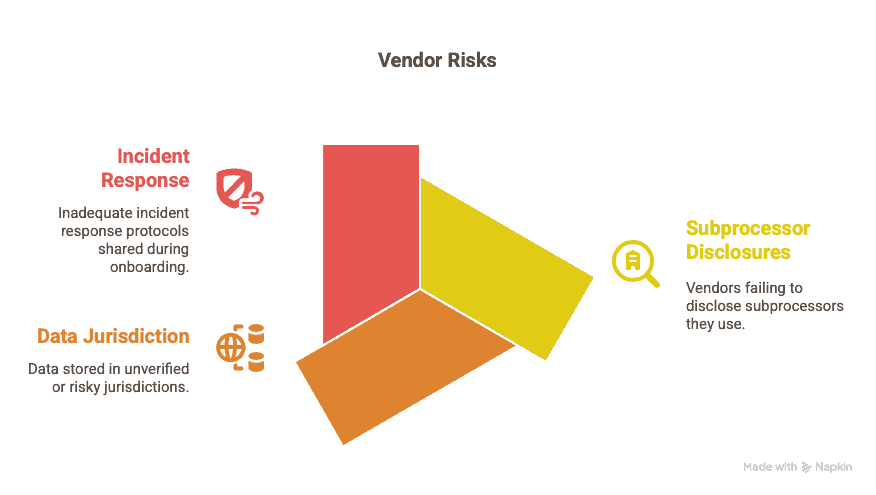Data Privacy Dayis no longer symbolic – it’s situational awareness with a calendar invite. In an era where surveillance is passive and breaches are active, this “holiday” is less celebration, more checkpoint. For enterprises managing terabytes of sensitive data, it’s a critical moment to question who has access, who shouldn’t, and why no one’s noticed.
The year on year shift is staggering. In 2023, for example, the average DDoS attack lasted 400% longer than it did in 2022. That’s not just an escalation – it’s a redefinition of what ‘persistent threat’ means. It signals a shift from blunt, temporary disruptions to long-game infiltration strategies. Organizations clinging to outdated privacy policies or surface-level audits are precisely the targets these attackers anticipate.
Charles Bender, CEO of Attentus Technologies, says, “The illusion of privacy is the most expensive security flaw you’ll ever ignore.” When data exposure becomes routine and reaction replaces prevention, reputational damage is inevitable.
This blog explores the hidden gaps, overlooked signals, and actionable practices that separate performative privacy from functional resilience. From strategic consent frameworks to fine-grained access governance, here’s what modern organizations must implement before awareness becomes an aftermath.
Privacy is a System Design Problem – Solve It IntentionallyArchitect smarter defaults, not damage control. Redesign the flow before the breach becomes the story. |
Rethinking Risk Exposure on Data Privacy Day: A Tactical Wake-Up for Enterprises
Enterprises treat Data Privacy Day as a reminder, but very few use it as a trigger for recalibration. This section outlines how to turn symbolic awareness into practical strategy by examining the real risks that often go unmeasured.
1. Where Privacy Weakens in Scaling Environments
Growth introduces hidden exposure. Without guardrails, business expansion often outpaces data governance.
- Merged systems carry legacy vulnerabilities
- User roles evolve but access privileges stay static
- Data lakes form without data classification policies
2. Missed Signals in Vendor Dependencies
Third-party platforms introduce downstream privacy challenges that internal audits often miss.
- Vendors without clear subprocessor disclosures
- Data stored in unverified jurisdictions
- Inadequate incident response protocols shared during onboarding

3. Risk Registers That Ignore Actual Behavior
Policies might outline restrictions, but real exposure comes from how users behave day to day.
- Shared credentials in teams under pressure
- File exports to personal cloud drives
- Shadow I.T apps handling sensitive information
4. No Contextual Logging = No Defense
Breaches are often detected after the damage is done. Why? Because the logs say what happened, not what shouldn’t have.
- Enforce event correlation across systems
- Implement risk scoring for anomalous patterns
- Establish response playbooks based on criticality, not category
In 2023, there were 2,365 cyberattacks with 343,338,964 victims. This isn’t rare anymore. It’s systemic. When privacy controls are invisible, they’re also ineffective.
Why Data Privacy Is a Strategic Function, Not a Compliance Checkbox
Compliance doesn’t guarantee protection. This section explores how data privacy needs to evolve from static documents to dynamic frameworks that impact decision-making, resource allocation, and executive accountability.
1. Privacy as a Decision Filter
Leaders should treat privacy controls as qualifiers in key business decisions.
- Launch plans must pass data governance checkpoints
- Product features involving PII need risk impact scoring
- Investment in platforms should factor in privacy engineering maturity
A hacker attack now occurs every 39 seconds. That frequency turns privacy into a competitive requirement, not just a legal obligation.
2. The Boardroom Belongs in Privacy Conversations
When privacy is seen as I.T’s burden, strategy suffers.
- Assign executive sponsors for privacy programs
- Include privacy impact in board-level reporting
- Align roadmaps with evolving regulatory landscapes
3. What Gets Funded Gets Respected
Privacy often lacks influence because it lacks funding. Prioritize budget around:
- Data discovery tools
- Access lifecycle management platforms
- Role-specific privacy training for high-risk functions
| More articles you might like:
|
Bridging the Gap Between Data and Privacy in System Design
Most organizations store data effectively but manage privacy poorly. This section addresses how the relationship between data and privacy must be encoded directly into system architecture.
1. Start With Data Classification, Not Storage
System design must begin with knowing what’s being stored, not just how and where.
- Tag data by sensitivity, not location
- Define expiration timelines per data type
- Automate archiving or redaction schedules
2. Build Guardrails Into Workflows
It’s easier to protect users when systems restrict poor decisions by design.
- Auto-expire access after role changes
- Embed approval loops into file-sharing platforms
- Prevent data egress via unmanaged channels
3. Infrastructure Should Not Be Privacy-Agnostic
The stack must actively participate in privacy, not passively host data.
- Use containerization to limit data sprawl
- Apply encryption at rest and in transit as defaults
- Employ tokenization for high-risk data flows
System-Level Privacy Alignment Matrix
| System Area | Privacy Alignment Recommendation |
| Application Workflows | Embed privacy triggers within user flows – prompt re-consent on data changes or policy updates. |
| Data Storage | Segment sensitive records into dedicated storage with restricted access and monitored retrieval paths. |
| Identity Management | Enforce expiration policies on user roles and automate privilege reduction after inactivity periods. |
| API Architecture | Gate external requests with context-aware rate limits and data scope enforcement by default. |
| Logging & Monitoring | Classify events by risk category, not just severity, to prioritize visibility where privacy is exposed. |
Why This Matters, and What You Should Do Next
Some providers sell privacy tools. Others deliver policies. We design operational clarity into every layer of the I.T environment – systems, policies, and user behavior. Our vCIO service is central to this approach, shaping forward-looking strategies that evolve with our clients. The result is a privacy posture that anticipates risks, scales with growth, and builds lasting trust
| Explore Trusted I.T Services Near You | ||||||
| Tacoma | Renton | Auburn | ||||
| Seattle | Bellevue | Kent | ||||
Contact us today to rearchitect privacy where it actually lives.



